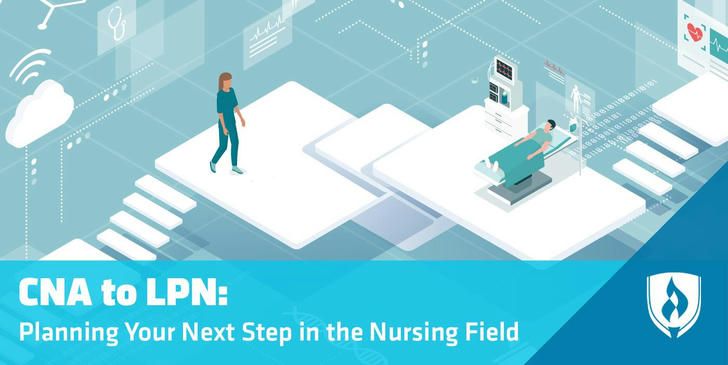Fast track from CNA to LPN: real U.S. pathways, government-backed options, certificates and how to apply
If already working as a CNA and ready to step up to LPN (or LVN in some states), there are several practical routes — from structured bridge programs to registered apprenticeships, WIOA-supported cohorts and employer-paid training. Below is a complete guide.

Real routes explained
1) CNA → LPN bridge programs (online + in-person clinicals)
These programs let CNAs transfer some prior learning/clinical experience and shorten the total time to LPN. Most bridge tracks combine online didactic modules (anatomy, pharmacology basics, nursing fundamentals) with scheduled in-person labs and clinical rotations at nearby healthcare sites. Typical length: 9–14 months on an accelerated schedule, though times vary by state and program. After completion the student is eligible to sit for the NCLEX-PN. Many community colleges and private vocational schools now advertise hybrid bridge formats.
2) Full LPN/LVN diploma programs (for CNAs who want the full route)
Standard practical-nurse programs at community colleges or vocational schools run 12–18 months (some accelerated tracks shave that down). Programs must meet state board approval and commonly carry ACEN or state-level nursing approvals — check the program page for accreditation and NCLEX-PN pass rates before enrolling. Graduates qualify to take the NCLEX-PN and apply for licensure.
3) Registered apprenticeships / employer-sponsored programs (earn-while-you-train)
A growing number of health systems and long-term care providers run registered apprenticeships or employer-backed cohorts where apprentices work paid shifts while completing classroom and clinical instruction. Some employers offer an hourly wage of $20.00 to $27.50 during the training period. These programs are built to combine on-the-job learning with related training hours; employers often increase pay as apprentices hit milestones. Check Apprenticeship.gov and local hospital career pages for available practical-nurse or nursing-assistant-to-LPN apprenticeships.
4) WIOA / American Job Center support
If eligible (dislocated worker, low-income adult, veteran priorities vary by area), local American Job Centers can issue Individual Training Accounts (ITAs) to pay for WIOA-approved LPN/PN training providers. States maintain Eligible Training Provider Lists (ETPLs) with programs that accept WIOA funding — a useful route if the timing or tuition is a barrier. Start at your local Job Center to get screened and learn which local LPN bridge programs accept ITA vouchers.
5) Federal scholarships & nursing workforce programs
For those willing to commit to working in shortage areas, the Nurse Corps Scholarship Program (HRSA) and similar state scholarship/loan-repayment programs can help fund nursing education in exchange for service in eligible facilities. These programs have specific eligibility rules and service commitments, so read the program guidance closely before applying.
Credentials and accreditation
🔹NCLEX-PN: the national licensing exam for practical nurses — program completion is required before sitting. Confirm the program explicitly prepares students and reports NCLEX-PN pass rates.
🔹Program approval/accreditation: look for state board approval and, when present, accreditation from bodies like ACEN. Accreditation matters for quality and for access to federal student aid.
🔹Clinical hours & externships: verify how many supervised clinical hours are included and whether the school helps place students at clinical sites — this is essential for licensure eligibility.
Typical timelines and study load (realistic)
🔸Bridge programs for experienced CNAs: ~9–14 months (hybrid).
🔸Full LPN diploma: ~12–18 months (day/evening options exist).
🔸Registered apprenticeships: variable — months to a couple of years, but paid from day one.
How to apply — a simple checklist
1.Decide your route (bridge vs full LPN vs apprenticeship).
2.Call your state Board of Nursing to confirm minimum clinical/training hours and exam eligibility for CNAs moving to LPN.
3.Visit your local American Job Center to ask about WIOA eligibility and the ETPL list of approved LPN or bridge providers.
4.Search Apprenticeship.gov for registered nursing apprenticeships in your ZIP code.
5.Contact employers (hospitals, long-term care chains) to ask about tuition-support or employer-sponsored pipelines — many have formal “CNA-to-LPN” employee pathways.
6.Confirm accreditation & NCLEX-PN prep before enrolling; ask about graduation NCLEX-PN pass rates and clinical placement help.
Final tips (to move faster)
🔹Get a short-term credential that helps now (CPR/BLS, medication aide where allowed) while applying to bridge cohorts.
🔹If an employer offers tuition support, read the employment commitment carefully (service payback clauses are common).
🔹Apply early to WIOA and apprenticeship intakes — spots fill fast.
CNA Certification Requirements By State
